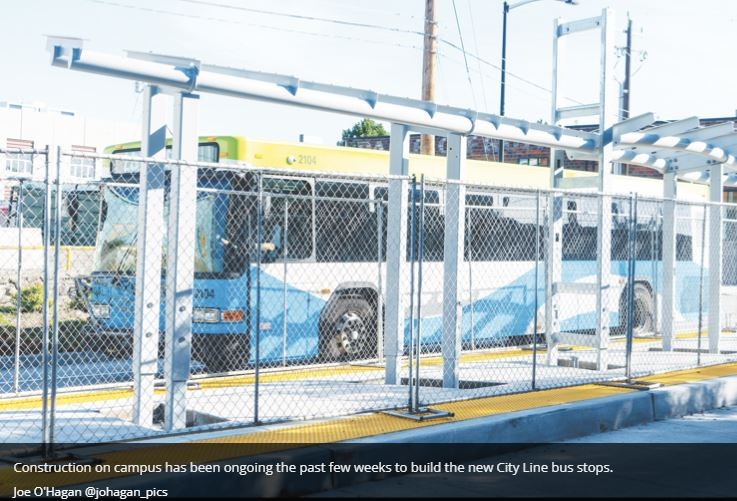City Line to connect students with Spokane, boost local economy
Thursday, October 13, 2022

(as reported in the Gonzaga Bulletin by Henry Krueger)
Without a car, it can be difficult to get acclimated to a new city.
It’s a struggle many college students face as roughly half don’t have a car on campus according to a 2016 survey from U.S. News and World Report.
Jim Simon, director of sustainability at Gonzaga University, said students often express a desire to become more familiar with the college’s home city of Spokane.
“I hear students recount how sometimes it’s difficult to feel connected to downtown Spokane,” Simon said. “Whether it’s restaurants or volunteer opportunities, they just don’t know because they don’t get a chance to experience it.”
The Spokane Transit Authority (STA) is trying to change that.
STA is set to debut a 6-mile City Line in July that begins in the Browne’s Addition Neighborhood and runs through the core of downtown and the University District before ending at Spokane Community College in the Chief Garry Park Neighborhood.
There will be two bus stops at GU: Cincinnati and Desmet Northbound and Southbound. The next closest stops are Cincinnati to Springfield/Springfield to Centennial Trail, which is just beyond the Patterson Baseball Complex, and Mission Avenue & North Columbus Street, located near Safeway.
Increasing students’ access to public transportation was intentional, said Karl Otterstrom, STA’s chief planning and development officer.
“Spokane Transit sees itself as a crucial partner in the region’s higher education institutions,” Otterstrom said. “Transit use helps make college more affordable while also establishing habits that have longer-term benefits, as students leave their studies and choose to use transit for years to come.”
Funded by a variety of local, state, and federal sources, the $92.2 million project’s first phase of construction began in 2020 and the second phase in 2022.
The first phase focused on groundwork, platform construction, power and data connections, along with road improvements, according to the City Line website. The second phase prioritized enhancing amenities that were installed such as shelters, pedestrian lighting, station markers and real-time bus departure signs.
While the second phase may seem like the cherry on top from the work done in the first phase, it still serves an important purpose, Otterstrom said.
“Stations with shelters, lighting and real time information have a much more significant role in a community than a simple bus stop with a sign,” Otterstrom said. “The tangible elements communicate to people the service is there for the long-term, and there is information at the location to aid them in making spontaneous travel plans.”
Projected to carry 1 million passengers annually, the City Line will use 60-foot long New Flyer Xcelsior CHARGE battery electric buses. The $13.9 million purchase of 10 buses was approved by the STA Board of Directors on April 16, 2020.
The benefits of the new buses include lower life cycle costs, zero greenhouse gas emissions and quieter vehicle operation. STA will also see an estimated monthly savings of almost $200 per City Line bus over the cost of a diesel bus.
In a City Line reveal video released on March 4, 2021, Spokane Mayor Nadine Woodward spoke highly of the all-electric, zero-emission vehicle technology.
“People like to try things that are new, that are exciting,” Woodward said. “City Line is not just a project that we’ve been working on for a long time now, it’s an investment in the community, an investment in Spokane and a huge investment in our future.”
Aside from being eco-friendly, the City Line is expected to bring an estimated $175 million into the Spokane region over 20 years.
“When more students are going downtown for dinner or to spend time with friends, that means they’re spending money in the local economy, whereas before they might have been going to Costco or Walmart or the Safeway,” Simon said. “Now it's super easy like they can hop on the City Line and go to the Main Market Co-op, for example.”
With the line scheduled to finish next
summer,15 bus stops are finished and 13 are still undergoing work, including the two at GU as of Thursday. The five stops in Browne’s Addition have yet to start the second phase.